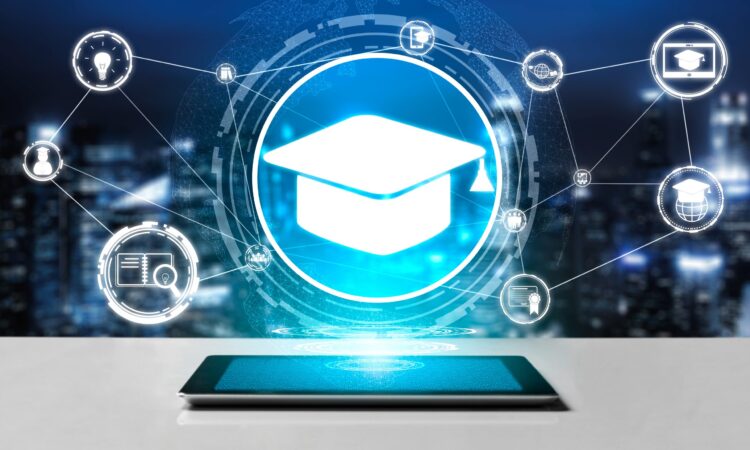
Digital transformation of communication has pervaded every sector — from social life and business to governance and education. During the pandemic, one of the immediate impacts was felt in education as schools and universities resorted to digital tools to continue learning without disruption. Today, the adoption of educational technology, or edutech, continues to be a vital part of the learning system, with 86% of educators identifying it as a core driving factor for better learning. Let’s understand how technology can enhance the learning experience in education.
The importance of educational technology
For foundational education:
- Scalability of quality content: Digital tools in edutech have the potential to standardize quality content at scale. It helps students and teachers overcome the challenges of distance education, lack of teaching staff, or low levels of instructive and subject matter expertise among teachers. Edutech allows the distribution of pre-recorded lessons by qualified educators to remote regions or during school closures. Additionally, providing hardware preloaded with educational material can make learning accessible for those left behind due to a lack of infrastructure.
- Personalized learning: No two learners understand and grasp a subject in the same way. The use of technology in education allows students to personalize the experience with the help of digital tools, which diagnose students’ levels and progress lessons based on their capability and interest. Computer-adaptive learning or live one-on-one tutoring can help in differentiated instruction, thus helping students learn at their own pace.
- Opportunities for extensive practice: Applying what you learn cements the concepts at the foundational level. Hence, practice exercises are fundamental to remembering and implementing ideas that were learnt. Digital educational tools can create numerous tests and practice exercises, thus supplementing traditional learning systems.
- Enhanced engagement through interactive media: Student engagement is considerably high when their curiosity to learn merges with fun elements such as gamification. Interactive videos on a wide variety of topics beyond the set curriculum encourages curious minds to explore various ideas and concepts at their own pace. Gamification adds a competitive and fun element, which motivates learners to practice and exercise their learnings.
For higher education:
- Simulations and real-world scenarios: Simulations, 3D models, and real-world scenarios help advanced learners to grasp complex concepts. The use of augmented reality/virtual reality in edutech has the potential to keep learners engaged and motivated to continue their educational journey. Digital tools integrate real-world scenarios and case studies for learners to expand their understanding and application of concepts.
- Smooth collaborations with peers: Digital edutech tools have successfully improved collaborations and communication globally, as evident during the pandemic. Videoconferencing, chat and discussion rooms, and collaborative software help students and teachers connect and augment learning outcomes. It also helps students gain broader perspectives by connecting with peers across geographies.
- Advanced research opportunities: Using educational technology, learners today have access to comprehensive knowledge sources on every topic of interest. It also shifts the responsibility of learning from educators to students and encourages self-learning methodologies in higher education. For educators, edutech brings opportunities to use a range of teaching aids and enabling tools to promote research and deep study.
- Flexible learning methods: Hybrid learning models gained popularity post the pandemic lockdowns as both students and teachers realised the advantage of flexible learning using Edutech. One example is the flexibility to take assessments and tests when the student is ready. Non-linear learning and vocational skill development are other areas that benefit from the flexibility that e-learning offers.
- Interactive assessments: Educators and students use digital tools and software in edutech to engage in real-time evaluations and feedback. Technology has made it easy to report, assess, and analyse learning outcomes in students. This helps teachers and students to monitor their comparative progress over time and focus on areas where greater efforts are needed.
Conclusion
The educational field has advanced significantly, thanks to technological developments. Many students now have the chance to emerge as independent learners and further their education at a pace that works best for them because of the digitalization of learning approaches. The growth of educational technology has given educators a range of methods to deliver educational resources and improve the learning experience. The key to improving learning outcomes is successfully deploying the most suitable educational technology services to enhance existing pedagogical styles and strive toward innovative methods in the knowledge sector.





